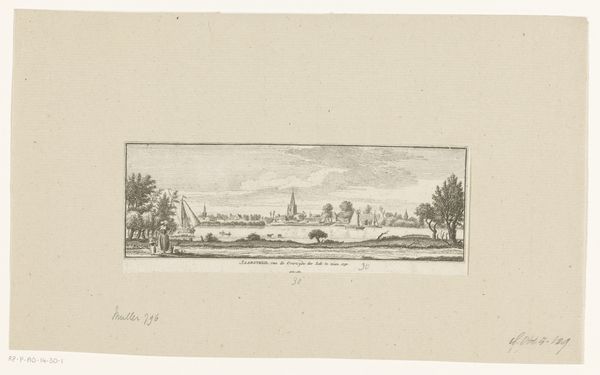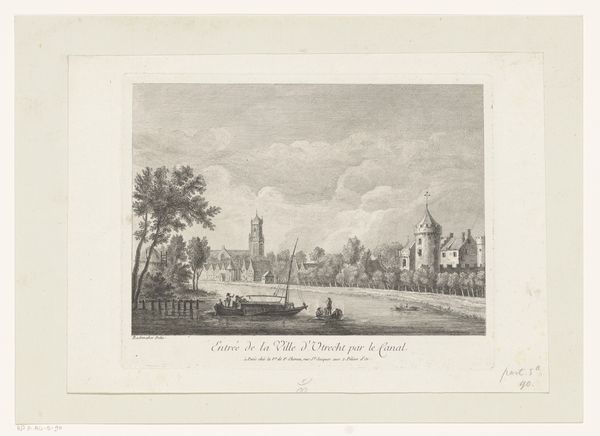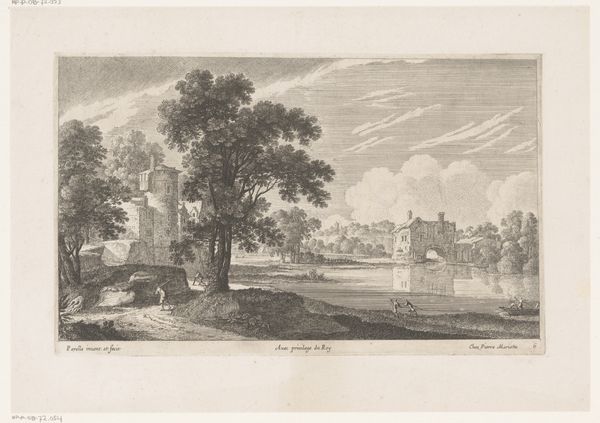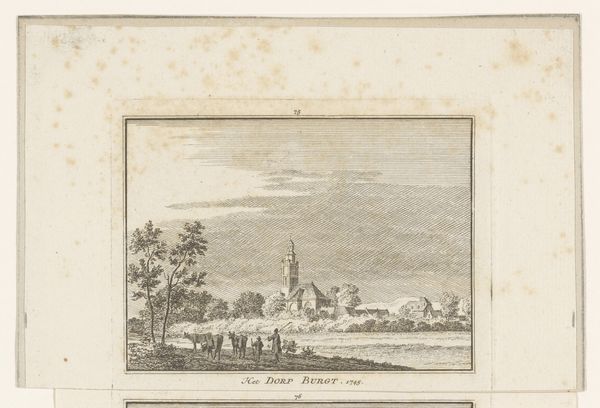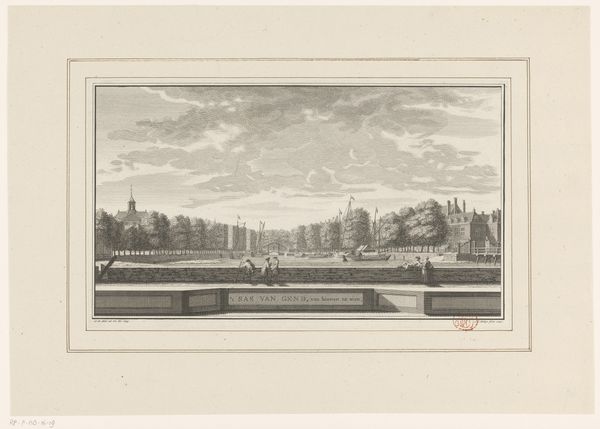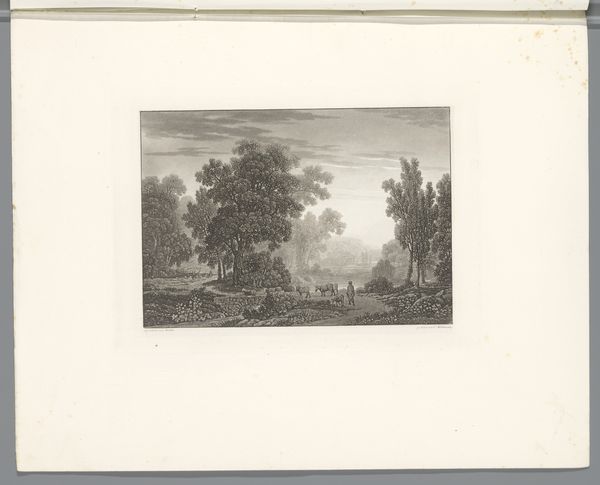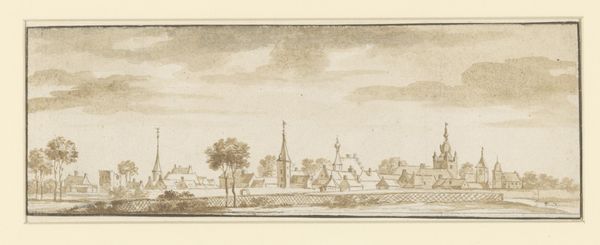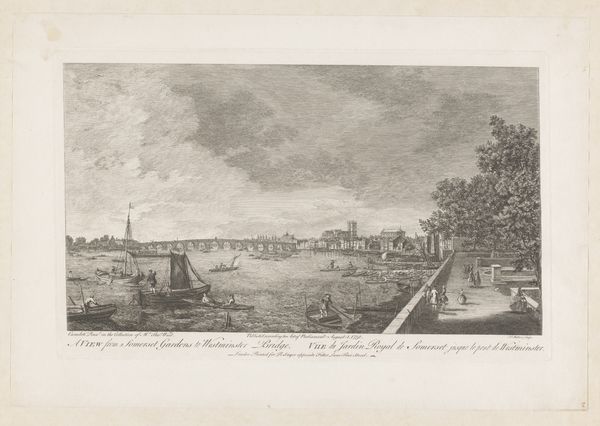
drawing, print, etching, paper, engraving
#
drawing
#
ink paper printed
# print
#
etching
#
landscape
#
paper
#
cityscape
#
engraving
Dimensions: height 111 mm, width 147 mm
Copyright: Rijks Museum: Open Domain
Editor: This is "Gezicht op Breda," a cityscape made between 1786 and 1792, likely by Carel Frederik Bendorp. It’s a print – etching and engraving – on paper, and the delicate lines give it a quiet, pastoral feel despite being a view of a city. What compositional elements stand out to you? Curator: The artist has skillfully organized space. Observe how the dark, dense trees on the left, contrasted by the gradual opening towards the city of Breda, pull the eye across the work. Bendorp is setting up an axis of perception, manipulating our view through varying degrees of enclosure and openness. Editor: I see that! The eye really does travel from the darker area to the light. Is that a common technique? Curator: It is. Notice also the proportional relationship between foreground, middle ground, and background. The artist’s measured rendering allows the cityscape to breathe. Furthermore, the use of light and shadow – where does Bendorp concentrate detail and where does he let the eye rest in simpler, less defined spaces? Editor: Near the buildings and figures mostly. So, by carefully adjusting these structural relationships of dark and light and near and far, the artist is crafting a certain reading of the image? Curator: Precisely. The very act of observation is orchestrated. What do you make of the human figures? Do their scale and placement within the landscape have any effect on your understanding of the piece? Editor: They feel like they reinforce the sense of depth, right? And make the city seem even bigger and farther away. This has given me a much greater appreciation for how the artist is using lines and proportions to define a sense of space. Curator: Indeed. The artwork's form gives rise to its aesthetic power.
Comments
No comments
Be the first to comment and join the conversation on the ultimate creative platform.
